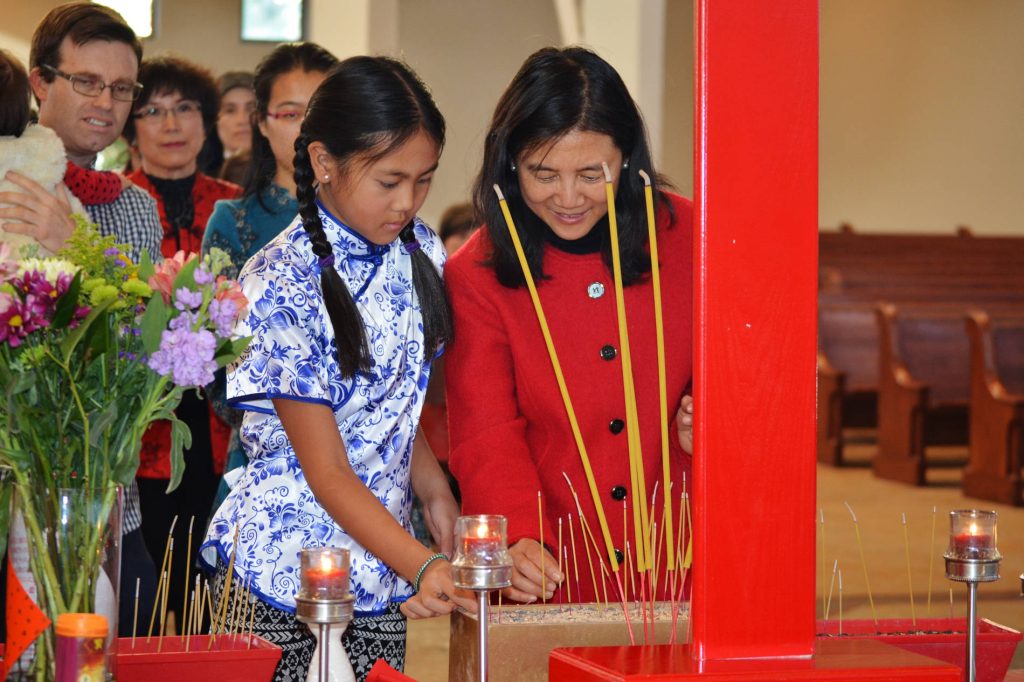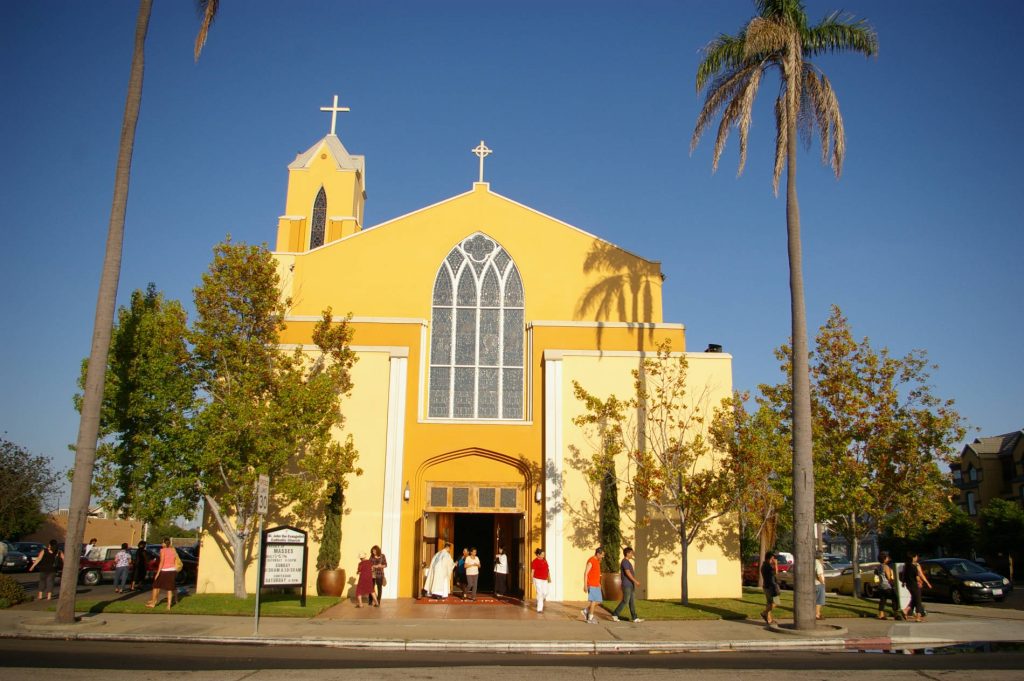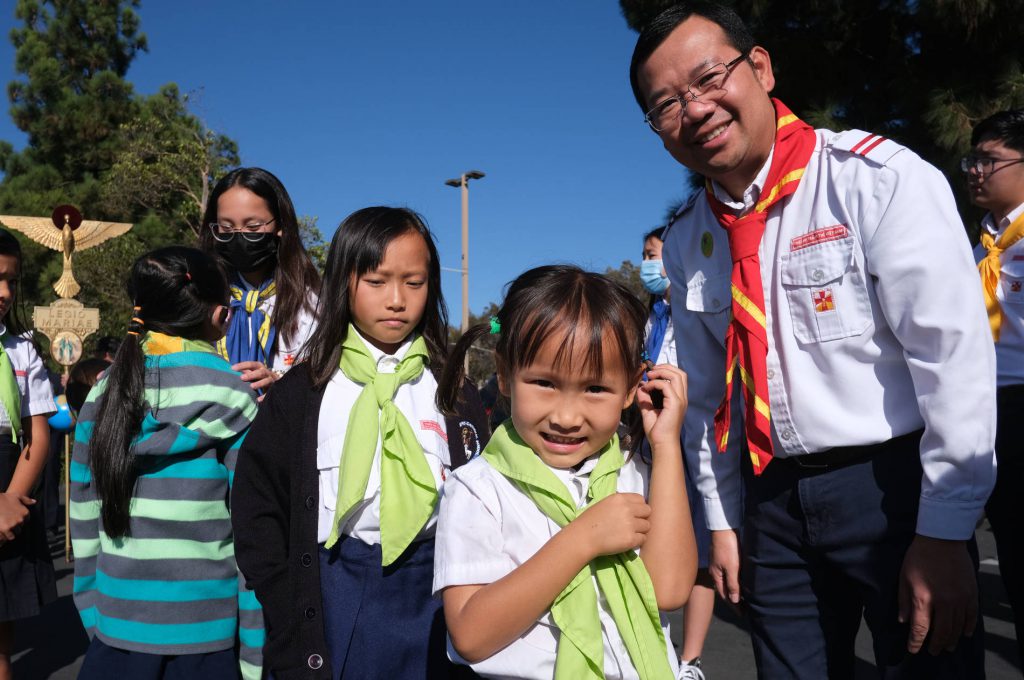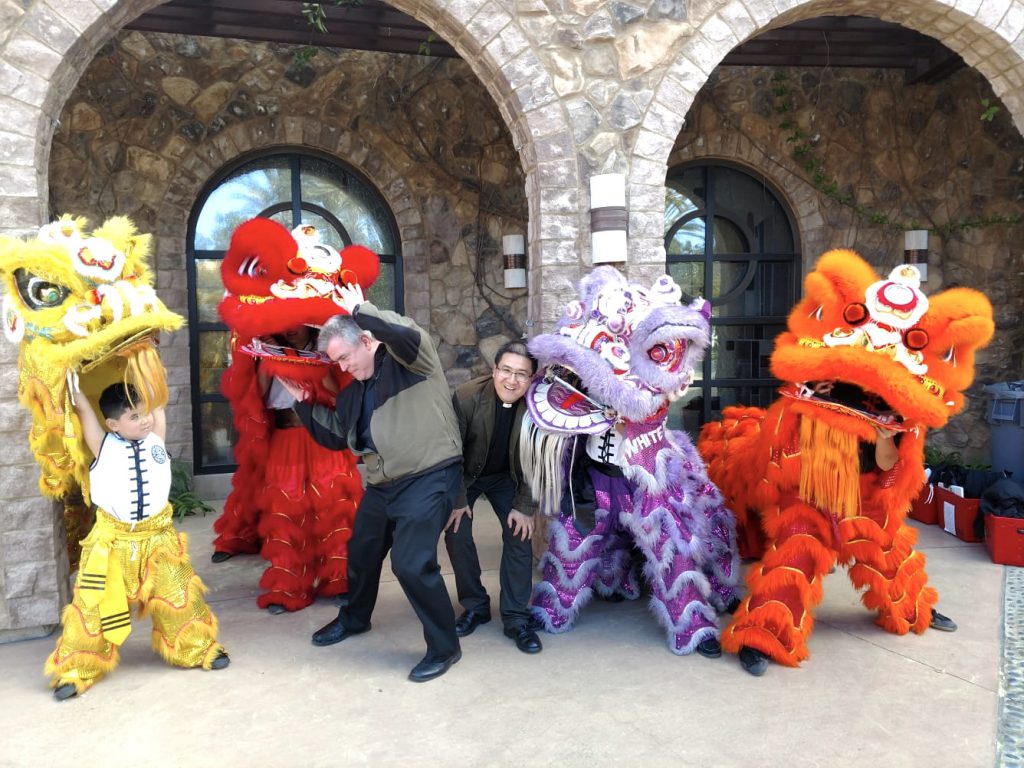By Chris Bongato
SAN DIEGO — As we dive into the new year, we look forward to personal growth as we leave the old one behind. We hope to be more attuned to God’s will and be a more loving, Christian people.
One way we can do this is by discovering the stories of the diverse Catholic cultural groups in our midst. Three communities — the Vietnamese, Chinese and Korean — will soon celebrate their own new year, Lunar New Year. Their stories reveal sacrifice, a determination to maintain their faith despite facing barriers, and a commitment to integrate into and support their Church community, as one people of God.
Lunar New Year Celebrations
This tradition is a celebration that ties these cultures together to begin the new year based on the lunar calendar. Generally celebrated in the context of the Mass, it is similar to how Catholics commemorate secular holidays like the Fourth of July or Memorial Day. Although these holidays aren’t on the liturgical calendar, they are important cultural days to gather and celebrate.
For the Vietnamese Catholic community, each predominantly Vietnamese parish has a celebration for Lunar New Year around Feb. 1. During Mass, there may be liturgical dancing, not only to worship God but to express devotion to the Blessed Mother. Afterward, the celebration continues in the parish hall with traditional Vietnamese food centering on bành chưng, a square sticky rice cake, followed by entertainment.
The Chinese and Koreans celebrate the Lunar New Year in a similar fashion. And all three include special rituals to honor and venerate their ancestors. Like the Hispanic community’s Día de los Muertos, families create altars adorned with photos, notes, flowers, lighted candles, even food, and pray for their deceased loved ones.
Chinese Catholics
Christianity has been in China since the 7th century, but Franciscan missionaries didn’t arrive until the 13th century. In the 16th century writings of Mateo Ricci, an Italian Jesuit missionary/scholar known as the Apostle of China, he explained that Confucianism and Christianity are remarkably similar in key respects. His writings were used to convert the Chinese to Christianity, but also contributed to evangelization in Vietnam and Korea.
Chinese immigrants who arrived in the United States in the 1990s, including many Catholics, experienced persecution by the Chinese government that heavily regulated Christians, as it still does today.
The Chinese Catholic community started in San Diego with only three families. Last year, the community celebrated its 25th anniversary at St. Therese of Carmel Parish.
The Chinese-language Mass, initially scheduled twice a month at the parish, gradually evolved into a weekly one.
Margaret Marsh, the community’s president, shared that in the early years, there were no local priests to celebrate Mass for them, so they would drive back and forth to Los Angeles to bring one. Over the past 25 years, at least 80 priests have come to serve their community. In the past five years, Father Anthony Yang, SVD, has celebrated the Chinese-language Mass.
Marsh said that the community has between 80 and 100 families registered, with about 50 to 60 of them active, and 60 to 80 individuals currently attend Mass at St. Therese. The community also has an RCIA program held after Sunday Mass.
Marsh said the community reaches out to students or others visiting San Diego from China. They understand the difficulty of knowing or proclaiming the Catholic faith, given their government’s laws, and want to let them know they are loved by God and can count on the local Chinese community’s support.
Vietnamese Catholics
French Jesuits introduced Catholicism in Vietnam in the 17th century. Though many Vietnamese converted to Catholicism and respected the missionaries, Catholic evangelization and worship was prohibited. This persecution during the rise of Communism led to martyrdom throughout the region, but these great servants continued to nurture the seed of faith among the Vietnamese faithful.
After the fall of Saigon in 1975, many Vietnamese refugees came to the U.S. heartbroken to leave their country. Giai Do, 60, recalls that when he came as a 17-year old with his family, they were “housed in a tent city in Camp Pendleton.”
After being processed, they were sponsored by families in local parishes. Do’s family was sponsored by a family at St. Martin of Tours. He said that he “cannot overemphasize how much kindness (he) received and how much support (his) family received from the parish.”
Masses in Vietnamese were held once a month, but their frequency increased as the population grew, today numbering between 4,000 and 5,000, around 1,100 families. They settled in parishes such as Holy Family, Our Lady of the Sacred Heart, Good Shepherd, Holy Spirit and St. Thomas More (formerly at St. Francis of Assisi).
Do remembers that it was hard to integrate into the existing Church community due to the language barrier. Eventually, they became active servants and leaders within their parishes with the help of their pastors, who recognized their gifts and talents.
In 1978, the Vietnamese community became more organized and started to hold catechism classes, which also taught Vietnamese Catholic history. The Eucharistic Youth Movement also helped to apply what they learned in classes.
Korean Catholics
Korea’s Catholic journey is one that starts with self-discovery. It is the only country in the world throughout the centuries where the Catholic Church was founded spontaneously by the native people themselves, who brought the faith from China. Through a collaborative effort of many faithful, Christianity took root in Korea.
Korea’s first significant contact with Christianity was through missionaries in China in the 17th century. With the arrival of clergy from China and Europe, Korean Catholics were able to experience the true Mass, receive the sacraments and ordain native-born priests.
Like Vietnam and China, there were many waves of Catholic martyrs in Korea. The Korean faith remained strong even amid persecution and martyrdom.
The Korean faithful migrated to the U.S. to seek economic and educational opportunities, and were followed by their children.
An example is Jongshick Ahn, secretary of the Korean Catholic community. He lived a worldly life, focused on finances. His Catholic wife brought him into the Catholic community and, after seeing a great model of faith among its members, he decided to convert to Catholicism.
The local Korean Catholic community started in the 1990s, centered at St. Columba Parish in Serra Mesa. There are about 350 families, with an estimated 1,000 individuals, in the community. Due to the language barrier, the Korean community is separated from the larger parish community. The Korean community also created faith formation, cultural education, and community-building opportunities for adults and youth.
Chris Bongato is a third-year seminarian in the Catholic Diocese of San Diego.
An Invitation
These communities, with support and assistance from local diocesan clergy, have been able to provide a safe place for each other to grow in love and virtue while maintaining their faith traditions and family values. Each of these communities expresses their appreciation for being welcomed into the local Catholic community, and reciprocates with the same spirit towards other cultures, celebrating with them and gathering as one Universal Church.
The schedule of Lunar New Year Masses includes: Sunday, Jan. 30, 12 p.m., St. Columba Parish (Korean); Monday, Jan. 31, 7 p.m., Good Shepherd Parish (Vietnamese); Saturday, Feb. 5, 1 p.m., St. Therese of Carmel Parish (Chinese). Check each parish for the latest details.









